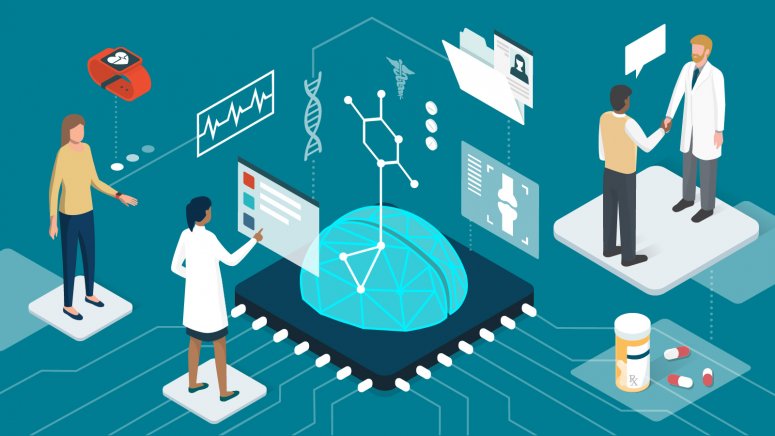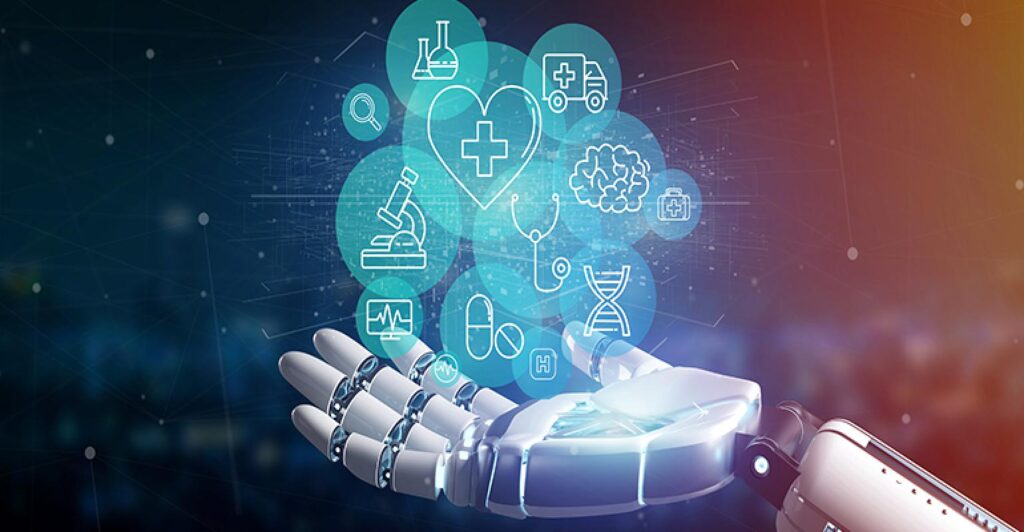
If you’ve been following my articles, I’ve covered what is AI, the types of AI, and how AI is going to shape the future. If you haven’t had a read and would like to, you can read my first article ‘Whats is Artificial Intelligence?’ and ‘How AI is going to shape the future?’.
I hope we all have a good understanding of what AI is and what its future holds, lets now look into how AI is currently being used specifically in the healthcare industry.
I started off with this because we’re still living the dreadful mishaps of 2020, where the world was living the worst pandemic since the Spanish Flu over 100 years ago. Although since the start of the pandemic, vaccines from various companies have been created, the healthcare industry was overwhelmed and had immense pressure on medical professionals from frontline NHS and private clinic staffs to biomedical scientists in the background, having sleepless nights trying to figure out a way to make this lockdown nightmare end.
The pandemic is a small reminder of how swamped and saturated the healthcare system is on a day-to-day basis. This overwhelming pressure of work means that other patients that require emergency service or assistance will not be able to get the treatment they need, essentially leading to the unfortunate worsening of conditions of these patients.
So what are we going to do about the high-pressure workload on healthcare workers?
First, what can you do?
The world of technology has consumed a lot of our lives, if you believe it’s negative or positive is purely up to you. However, there are many apps available that promote healthier lifestyles. The beauty of YouTube and Google has allowed us to research particular foods we eat, where they originate from, and how they benefit or affect us. It essentially puts the consumer in control of their health and well-being. It lets you be in control of your life.
Early usage of AI:
AI is currently being used to detect diseases such as cancer by identifying them at an early stage. I have currently written an article about Artificial Intelligence and Cancer, if you would like to have a read, click here. According to the American Cancer Society, a high percentage of mammograms are giving false results, stating that 1 in 2 women have cancer. Can you imagine how it feels to be told you have cancer when you don’t? Can you imagine how it feels to be told to have Cancer, period? It is probably one of the worst things to ever hear.
It’s scenarios like this where AI is going to be of great use. The use of AI is currently reviewing and translating mammograms 30 times faster with a 995 accuracy. This, in turn, cuts the number of biopsies that women have to undergo as they will not be received false results along with efficiently using the healthcare budget on the correct patients.
AI is also being applied to the early stage of heart disease, assisting caregivers and doctors with monitoring and detecting life-threatening issues at an earlier stage where it can be easily treatable. Overall, the has limited exposure to worsening conditions, giving priority care to those who need it the most, raise anomalies at an earlier stage leading to disease prevention.

Data and Research:
In order to improve the healthcare system using AI, it requires a lot of data that goes through the appropriate cleaning and decision process before building predictive analytics which can support clinical decision making. Pattern recognition is a form of analysis that helps to identify patients with specific conditions and their current level of risk.
However, AI does go beyond the scopes of scanning through health records, putting them into specific categories which will help providers identify diseases by looking at specific symptoms and statistical data. AI can facilitate and assist clinicians to take a more efficient approach to health and disease management, leading to a better care plan for an efficient long-term treatment program.
The route takes in order to get an accurate vaccine, medication to a patient from a laboratory is a maze. According to the California Biomedical Research Association, it roughly takes an average of 12 years for a drug to pass all the levels from the research lab to be able to be in a patient’s hand. Only 5 in 5,000 of these drugs make it to the preclinical testing stage where it can further move onto human testing and 1 of these 5 passes the approval for human usage. There is a lot of time and money that goes into the development of a drug.
Drug research is an effective recent application of AI as it speeds up the process of anomalies, reduces the misuse of healthcare costs, and produces more accurate results.
Robots and AI:
Some of you are probably interested in the use of Robots in the healthcare field. Robots have been by our side in the world of medicine for more than 30 years. Their roles range from simple laboratory tasks to complex surgical tasks, where they can aid a human surgeon or have the ability to execute these tasks by themselves.
According to Public Health Matters, the life expectancy in England in 2020 was 78.7 years for males and 82.7 years for females. We are living a much longer life than the previous generations and the approach to one’s end of life are much different and slower.
However, there is also a phase of the end of life that many don’t speak about; the phase of loneliness. Have you ever heard of stories where one party in a marriage or relationship passes away and not long after the other party passes. I believe it’s the spread of heartbreak and loneliness eating at you. Unfortunately, this is not something we can control. However, Robots have the potential to assist people during end-of-life care by helping them to reduce the need for hospitalisation/care homes along with the use of the humanoid aspect of robots being able to give humans a social interaction, keeping the elderly occupied, happy and sharp.
This article was a vague scope on how AI is used in different sectors of healthcare. In my next article, I will dive into another sector. Stay tuned!
If you would like us at AI Time Journal to further explore something of your interest or have any further questions, please connect with us on LinkedIn or Twitter.
